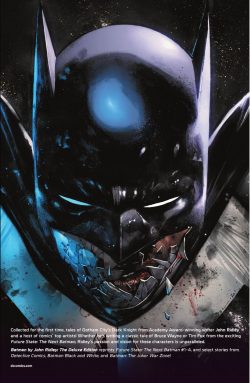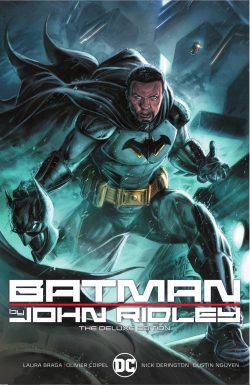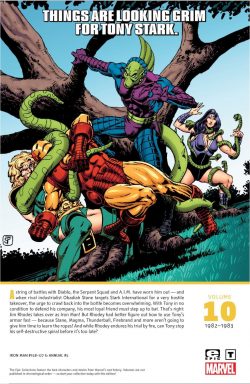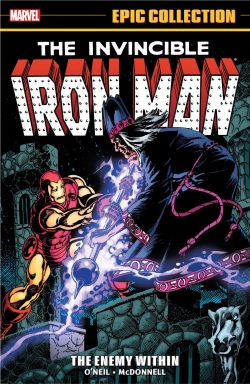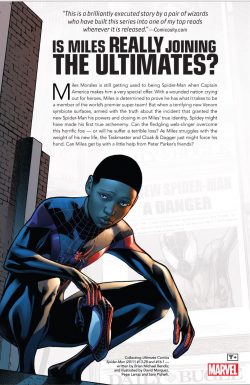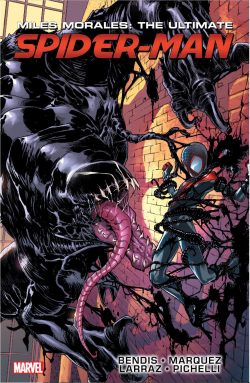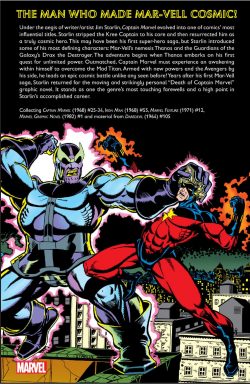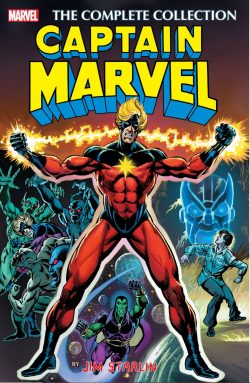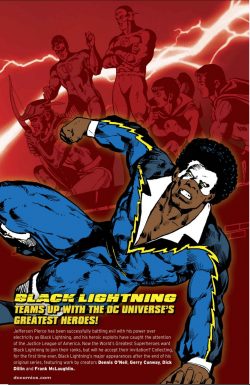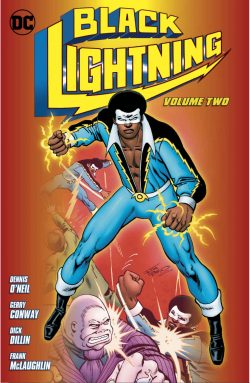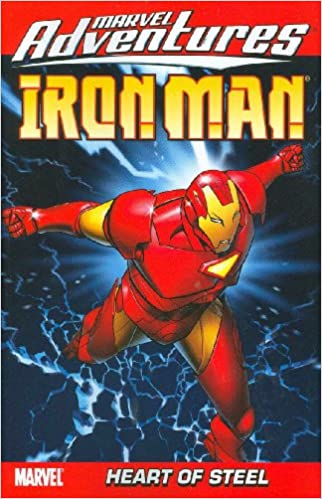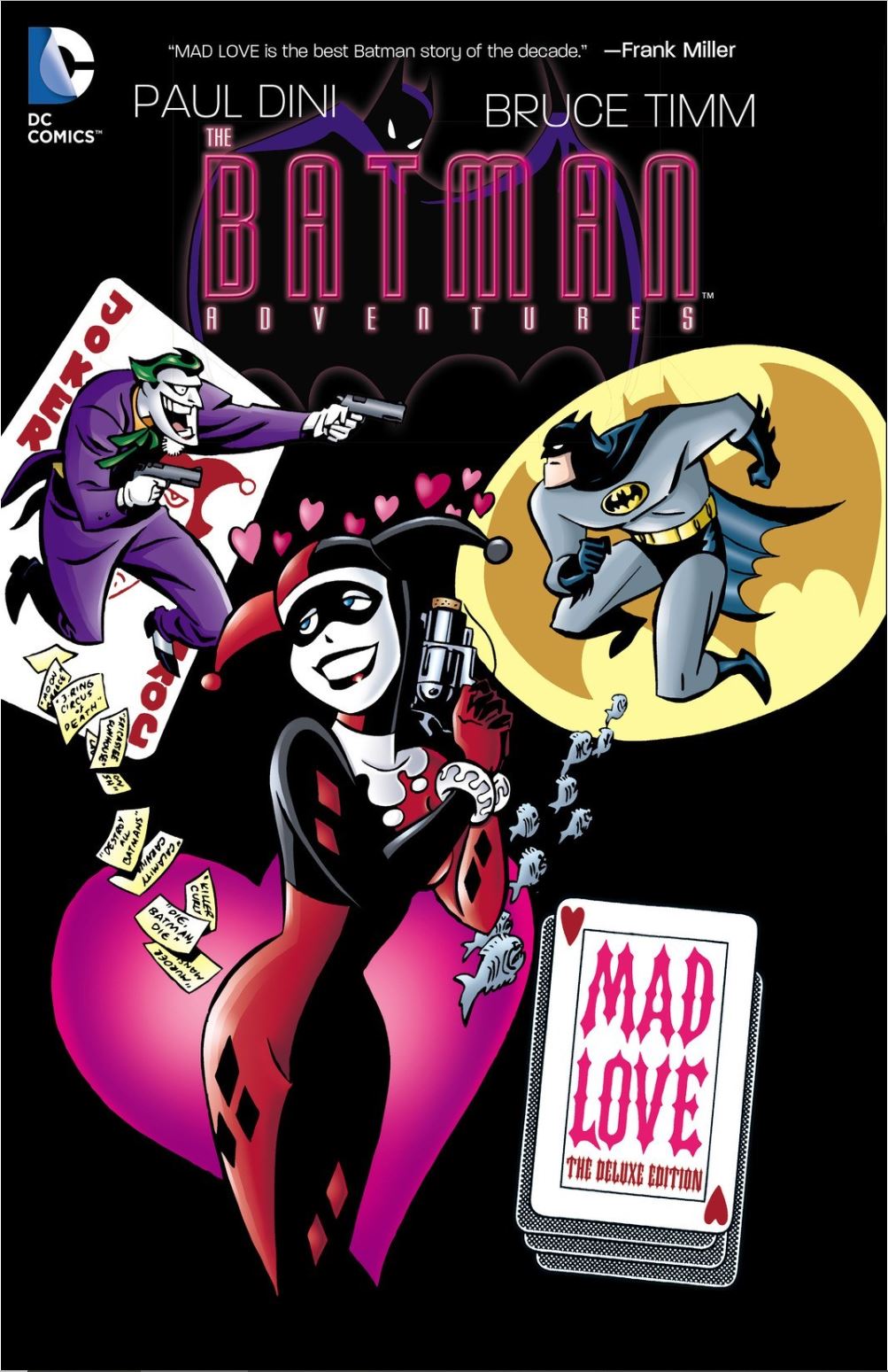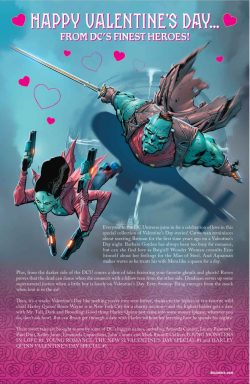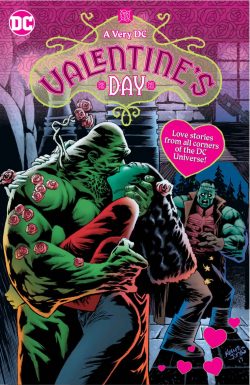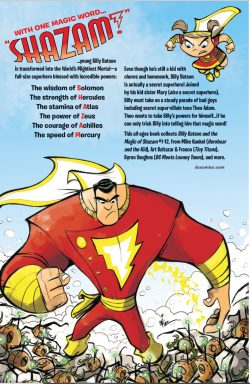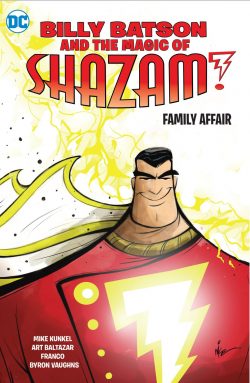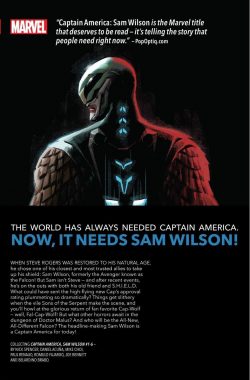
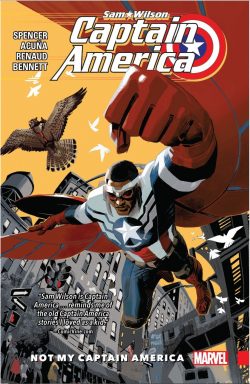
By Nick Spencer, Daniel Acuña, Paul Renaud, Joe Bennett, Mike Choi, Romulo Fajardo Jr., Belardino Brabo & various (Marvel)
ISBN: 978-0-7851-9640-2 (TPB/Digital edition)
Created by Joe Simon & Jack Kirby in an era of national turmoil and frantic patriotic fervour, Captain America was a dynamic, emphatically visible response to the horrors of Nazism and the threat of Liberty’s loss. Consequently, the concept quickly lost focus and popularity once hostilities ceased. The Sentinel of Freedom and Champion of Democracy faded away during post-war reconstruction, only to briefly reappear after the Korean War: a harder, darker Cold Warrior hunting monsters, subversives and “Reds” who lurked under every American bed.
He abruptly vanished once more, until the burgeoning Marvel Age resurrected him just in time to experience the Land of the Free’s most turbulent, culturally divisive era. He became a mainstay of the Marvel Revolution in the Swinging Sixties, but lost his way after that, except for a politically-fuelled, radically liberal charged period under scripter Steve Englehart.
Despite everything, Captain America evolved into a powerful symbol for generations of readers and his career can’t help but reflect that of the nation he stands for…
Devised in the fall of 1940 and on newsstands by December 20th, Captain America Comics #1 was cover-dated March 1941, and an instant monster, blockbuster smash-hit. The Sentinel of Liberty had boldly and bombastically launched in his own monthly title with none of the publisher’s customary caution, and instantly became the absolute and undisputed star of Timely’s top-selling “Big Three” (with The Human Torch and Sub-Mariner.)
He was, however, one of the first to fall from popularity as the Golden Age ended.
During that initial run, his exploits were tinged – or maybe “tainted” – by the sheer exuberant venom of appalling racial stereotyping and fervent jingoism at a time when America was involved in the greatest war in world history. Nevertheless, the first 10 issues of Captain America Comics remain amongst are the most exceptional comics in history…
You know the origin story like your own. Simon & Kirby revealed how scrawny, enfeebled patriot and genuinely Good Man Steven Rogers – after being continually rejected by the US Army – is recruited by the Secret Service. Desperate to stop Nazi expansion and Home Front mischief, the passionate kid joined a clandestine experimental effort to create physically perfect super-soldiers.
I have no idea if the irony of American Übermenschen occurred to the two Jewish kids creating that mythology, but here we are…
When a Nazi infiltrated the project and murdered the pioneering scientist behind it, Rogers was left as the only successful result and became America’s not-so-secret weapon. When he was lost, others took up the role and have periodically done so ever since. I might be wrong, but as I recall every substitute and replacement was white and male…
Over decades the story unfolded, constantly massaged and refined, yet essentially remaining intact. In 2002 – and in the wake of numerous real-world scandals like the revelations of the “Tuskegee Experiment” (AKA Tuskegee Syphilis Study 1932-1972) – Robert Morales & Kyle Baker took a trenchantly cynical second look at the legend through the lens of the treatment of and white attitudes towards black American citizens…
The result was Truth: Red, White & Black (link please): a hard-hitting view of the other side of a Marvel foundational myth that forever changed continuity: one using tragedy and injustice to add more – and more challenging – role models/heroes of colour to the pantheon.
As Marvel expanded and reached market dominance in the 1960s, its publications ceaselessly whittled away at the unacknowledged colour bar in comics. At this time, many companies (choked to bursting point with seditious Liberals and even some actual Intelligentsia!) were making tentative efforts to address what were national and socio-political iniquities.
However, issues of race and ethnicity took a long time to filter through to still-impressionable young minds avidly absorbing knowledge and formative attitudes via four-colour pages that couldn’t even approximate the skin tones of African-Americans or Asians…
As in television, breakthroughs were small, incremental and too often reduced to a cold-war of daring “firsts”. Excluding a few characters (like Matt Baker’s Voodah) in jungle-themed comic books of the 1940s-1950, Marvel clearly led the field with their black soldier in Sgt. Fury’s Howling Commandos team – the historically impossible Gabe Jones who debuted in #1, May 1963. So unlikely was Gabe that he was automatically and so helpfully re-coloured “Caucasian” at the printers, who clearly didn’t realise his ethnicity but knew he couldn’t be anything but white.
Jones was followed by an actual African superhero when Fantastic Four #52 (cover-dated July 1966) introduced The Black Panther. Throughout that intervening period, strong, competent and consistent black characters – like The Daily Bugle’s city editor Robbie Robertson (Amazing Spider-Man #51, August 1967) and detective Willie Lincoln (Daredevil #47, December 1968) – had been gradually and permanently added to the regular cast of many series. They were erudite, dignified, brave, proudly ordinary mortals distinguished by sterling character, not costume or skin tone: proving that the world wouldn’t end if black folk and white folk occupied the same spaces…
The first “negro” hero to helm his own title had already come (and gone largely unnoticed) in a little-regarded title from Dell Comics. Debuting in December 1965 and created by artist Tony Tallarico & scripter D.J. Arneson, Lobo was a black gunslinger in the old west, battling injustice just like any “white hat” cowboy would.
For Marvel, the big moment came in Captain America #117 (September 1969) as, during an extended battle against the Red Skull and his sinister Exiles, artist Gene Colan got his wish to create the industry’s first official African American superhero: Sam Wilson, The Falcon…
After a few cautious months, he returned, became Captain America’s friend, student, partner and – after decades – ultimately his replacement…
Finally, change was acceptable. As the 1960s ended, more positive and inclusive incidences of ethnic characters appeared, with DC finally launching a black hero in John Stewart (Green Lantern #87, December 1971/January 1972) – although his designation as a replacement GL could be construed as more conciliatory and insulting than revolutionary.
DC’s first solo star in his own title was Black Lightning, but he didn’t debut until April 1977, although Jack Kirby had introduced Vykin in Forever People #1, the Black Racer in New Gods #3 (March and July 1971) and Shilo Norman as Scott Free’s apprentice/successor in Mister Miracle #15 (August 1973), whilst Archie Goodwin engineered Marvel’s biggest triumph with the launch of Luke Cage, Hero for Hire in the summer of 1972. A year later, Black Panther won his own series in Jungle Action #5 and Blade: Vampire Hunter debuted in Tomb of Dracula #10. At last, black people were part and parcel of a greater continuity society, not separate and isolated chimera on the fringes…
This big change came from incremental advances slowly achieved against the backdrop of a huge societal shift triggered by the Civil Rights movement, but even though it all grew out of raised social awareness during a terrible time in American history (yes, even worse than today’s festering social wars), kids and other readers knew something special was happening and they must participate…
Nearly half a century later, following a convoluted but generally steady and steadfast career, multi-talented flying superhero Sam Wilson was a tried and true star: holding a succession of civilian jobs – from social worker to architect to politician – whilst his true vocation was being a superhero, singly, in partnerships in the Avengers and as part of S.H.I.EL.D.
Recently: After spending 12 relative years in hellish time-bent Dimension Z raising a child and saving its indigenous people from sadistic Hitlerian uber-geneticist Arnim Zola, Steve Rogers finally returned to Earth to discover mere hours had passed in the “real” world.
Barely pausing, he went straight back to work, stopping deranged, drug-dependent US supersoldier Frank Simpson (AKA Nuke: a covert Captain America from the Vietnam era) slaughtering men, women and children in the nation’s name. Rogers was then sucked back into spy games: confronting former S.H.I.E.L.D. agent/messianic socialist Ran Shen, who aroused a sleeping dragon for its power to reshape the world to his liking. As the Iron Nail, he tried to destroy greedy, exploitative, destructive capitalism using tools and techniques taught him by Nick Fury (Senior) and Chinese iconoclast Mao Zedong…
Rogers won that war of ideological wonder warriors at the cost of his faith and lifelong purpose of his existence, but fell victim to Dr. Mindbubble: ready, able and extremely willing to share his terrifying expanded sensibilities with the corrupt Establishment world…
Already disgusted by the procession of appalling creations his country has devised in the name of security, Cap’s peace of mind took another big hit when S.H.I.E.L.D. admitted Mindbubble was theirs: a countermeasure to possible rogue super soldiers, but one mothballed when the cure proved worse than the anticipated affliction…
When the so-very-mad Doctor triggered S.H.I.E.L.D.’s ultimate doomsday weapon, Captain America and The Falcon did what they always did to save the world. Ultimately though, it was Rogers, resolute and alone, who fought his greatest battle to save innocents and a nation he embodied but no longer trusted…
What the Falcon rescued from the rubble, Rogers was no longer Captain America at all…
In the aftermath, and as part of publishing relaunch “All-New, All-Different”, weary, worn-out enfeebled Rogers got a desk job as security supremo whilst Wilson was promoted to Captain America. Sam picked up the shield, rebuilt his wings and promptly proved himself by stopping a plot to destroy humanity perpetrated by Helmut Zemo, Baron Blood and Hydra: executed by Sin, Batroc, Taskmaster, Armadillo, Crossbones and a host of other old foes…
Here, though, we’re concentrating on a true fresh start as our so-patient hero officially launches his new role. Gathering Captain America: Sam Wilson #1-6 (cover-dated December 2015 – April 2016), it’s scripted by Nick Spencer (Spider-Man, Astonishing Ant-Man) and initially illustrated by Daniel Acuña (Eternals, Wolverine, Black Widow) & Mike Choi.
During his last exploit the “black Cap” had lost sidekick Nomad, formed a potent alliance with wonder warrior/deadly detective Misty Knight, and became a very public figure in all his identities. Now, as he flies coach from Phoenix to New York that celebrity comes back to bite him…
As a public hero, Wilson wanted to try new things and employed Knight, former ally Dennis Dunphy (Demolition Man) and digital whistleblowing vigilante The Whisperer to run a full-time support team. After again beating Crossbones, Wilson repurposed his role as national symbol and defender by taking a public stand on numerous social and political issues. Generating a storm of right-wing dissent and anti-minority hate-speech, he then doubled down by creating a hotline where literally anybody could ask for Captain America’s help…
Pilloried in the media, he soldiered on, despite being inundated by nutjob notices from across the nation. His idea paid off when someone who really needed help made contact…
In Arizona, immigration was always a hot topic, but when Wilson learned young Joaquín Torres had been abducted by ultra-racists The Sons of the Serpent for helping the Mexican community, Captain America got involved…
The kid was one of many minority ethnic Americans helping immigrants, so the Sons had given him to evil genius Karl Malus to use in his experiments. Although the desert end of the human pipeline was quickly crushed, it took some time for Cap to track the kid down. By the time he and Knight had crushed a legion of villains and worked their way up an abhorrent chain, Torres had been cruelly and continually mutated, merged with Wilson’s animal ally Redwing and infected with vampirism, and was well on his way to becoming something unhuman…
Slow, patient work revealed connections to corporate America and just more “business opportunities” for unchecked Capitalism, and led to utter catastrophe after Malus turned Wilson into a science-derived werewolf and himself into a shapeshifting horror in the manner of Venom and Carnage.
Inevitably – and with Joaquín’s help – Knight, D-Man, Whisperer and “Cap-Wolf” stop Malus, only to find the war against the weakest was orchestrated by reptile-themed old foes working with big business. Rebranded “Serpent Solutions”, the former Serpent Society of supervillains sought to control Wall Street and the world, using tactics perfected by Hydra and AIM.
Their campaign kicks off in a tense tale limned by Paul Renaud & colourist Romulo Fajardo Jr., as supposedly reformed “bad-girl” Diamondback plays both sides when the embattled heroes act to expose the snakes’ scheme…
With double-dealing double crosses, unchallenged racial hatred and unchecked greed unleashed, the good guys are completely overwhelmed until the Serpents’ latest victim takes charge of his destiny and the newest incarnation of the Falcon flies to the rescue: claiming his own share of justice and retribution in a spectacular all action finale illustrated by Joe Bennett, Belardino Brabo & Fajardo Jr.
With covers and variants by Acuña, Renaud, Óscar Jiménez Steve Epting, John Cassady & Laura Martin, Mahmud Asrar and Evan “Doc” Shaner, this epic reworking of an American Tale is wry, witty, controversially outspoken (for a mainstream comic, at least) and superbly rewarding: a saga of the Black Cap which laid much of the groundwork for today’s screen informed Sentinel of Liberty. It might be Not My Captain America, but it’s definitely one all fans should see.
© 2016 Marvel Characters, Inc. All rights reserved.

